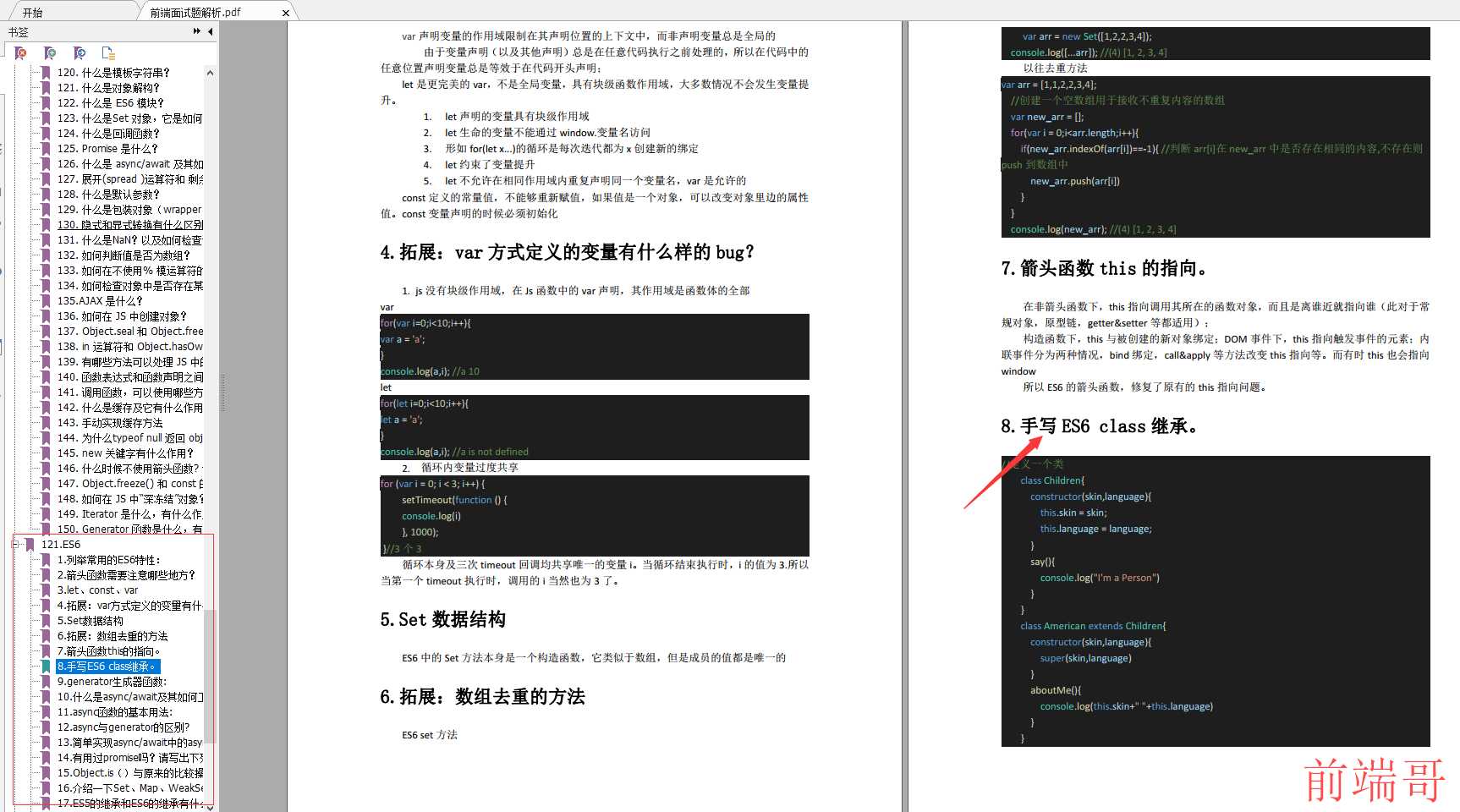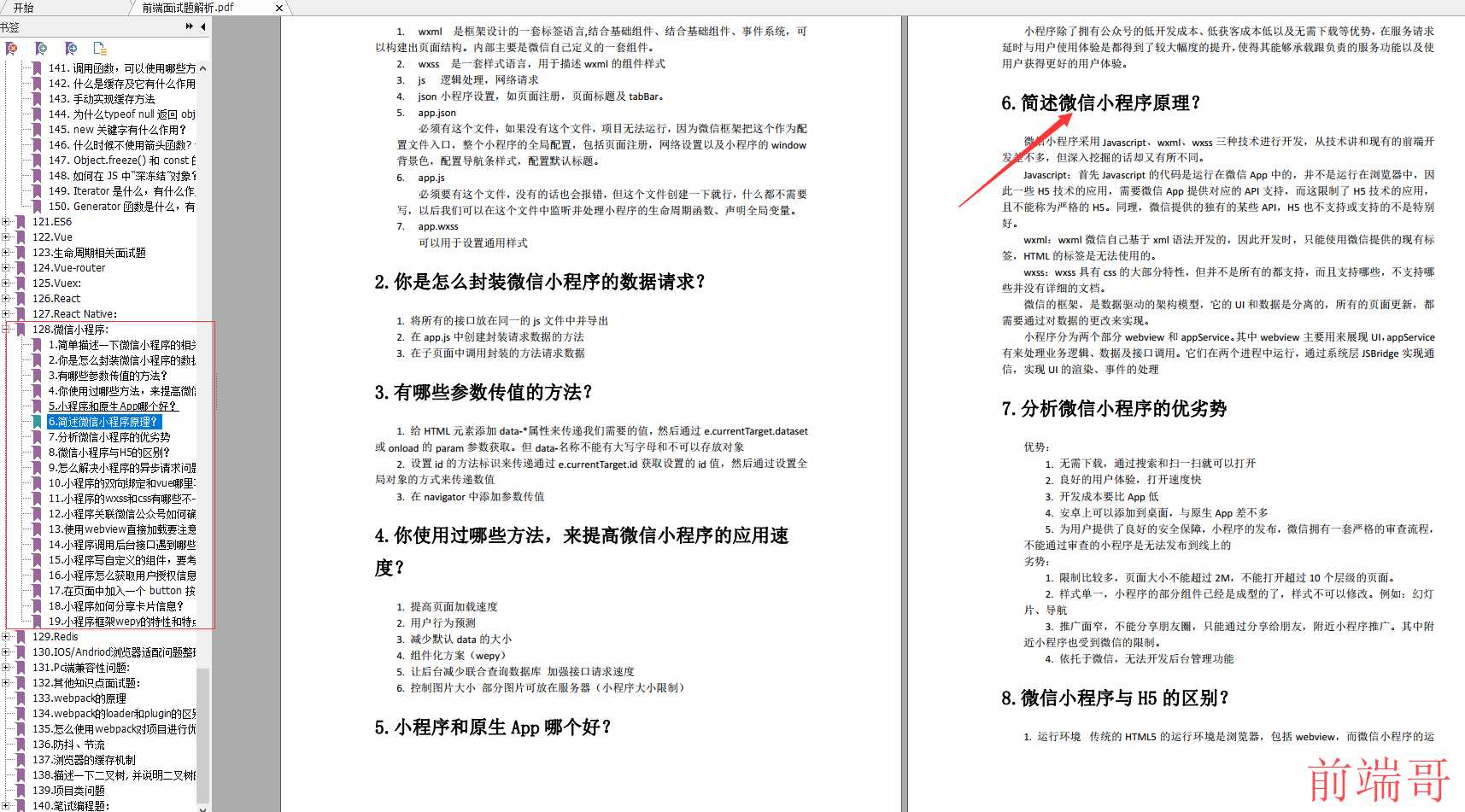-
* @param base 需要继承的ui组件
-
* @param prototype 插件的实际代码
-
* @returns {Function}
-
*/
-
$.widget = function(name, base, prototype) {
-
var fullName, //插件全称
-
existingConstructor, //原有的构造函数
-
constructor, //当前构造函数
-
basePrototype, //父类的Prototype
-
// proxiedPrototype allows the provided prototype to remain unmodified
-
// so that it can be used as a mixin for multiple widgets (#8876)
-
proxiedPrototype = {},
-
//可调用父类方法_spuer的prototype对象,扩展于prototype
-
namespace = name.split(“.”)[0];
-
name = name.split(“.”)[1];
-
fullName = namespace + “-” + name;
-
//如果只有2个参数 base默认为Widget类,组件默认会继承base类的所有方法
-
if (!prototype) {
-
prototype = base;
-
base = $.Widget;
-
}
-
// console.log(base, $.Widget)
-
// create selector for plugin
-
//创建一个自定义的伪类选择器
-
//如 $(‘:ui-menu’) 则表示选择定义了ui-menu插件的元素
-
$.expr[“:”][fullName.toLowerCase()] = function(elem) {
-
return !!$.data(elem, fullName);
-
};
-
// 判定命名空间对象是否存在,没有的话 则创建一个空对象
-
KaTeX parse error: Undefined control sequence: \[ at position 1: \̲[̲namespace\] = [namespace] || {};
-
//这里存一份旧版的插件,如果这个插件已经被使用或者定义了
-
existingConstructor = $[namespace][name];
-
//这个是插件实例化的主要部分
-
//constructor存储了插件的实例,同时也创建了基于命名空间的对象
-
//如$.ui.menu
-
constructor = $[namespace][name] = function(options, element) {
-
// allow instantiation without “new” keyword
-
//允许直接调用命名空间上的方法来创建组件
-
//比如:$.ui.menu({},‘#id’) 这种方式创建的话,默认没有new 实例化。因为_createWidget是prototype上的方法,需要new关键字来实例化
-
//通过 调用 $.ui.menu 来实例化插件
-
if (!this._createWidget) {
-
console.info(this)
-
return new constructor(options, element);
-
}
-
// allow instantiation without initializing for simple inheritance
-
// must use “new” keyword (the code above always passes args)
-
//如果存在参数,则说明是正常调用插件
-
//_createWidget是创建插件的核心方法
-
if (arguments.length) {
-
this._createWidget(options, element);
-
}
-
};
-
// extend with the existing constructor to carry over any static properties
-
//合并对象,将旧插件实例,及版本号、prototype合并到constructor
-
$.extend(constructor, existingConstructor, {
-
version: prototype.version,
-
// copy the object used to create the prototype in case we need to
-
// redefine the widget later
-
//创建一个新的插件对象
-
//将插件实例暴露给外部,可用户修改及覆盖
-
_proto: $.extend({}, prototype),
-
// track widgets that inherit from this widget in case this widget is
-
// redefined after a widget inherits from it
-
_childConstructors: []
-
});
-
//实例化父类 获取父类的 prototype
-
basePrototype = new base();
-
// we need to make the options hash a property directly on the new instance
-
// otherwise we’ll modify the options hash on the prototype that we’re
-
// inheriting from
-
//这里深复制一份options
-
basePrototype.options = $.widget.extend({}, basePrototype.options);
-
//在传入的ui原型中有方法调用this._super 和this.__superApply会调用到base上(最基类上)的方法
-
$.each(prototype, function(prop, value) {
-
//如果val不是function 则直接给对象赋值字符串
-
if (!$.isFunction(value)) {
-
proxiedPrototype[prop] = value;
-
return;
-
}
-
//如果val是function
-
proxiedPrototype[prop] = (function() {
-
//两种调用父类函数的方法
-
var _super = function() {
-
//将当期实例调用父类的方法
-
return base.prototype[prop].apply(this, arguments);
-
},
-
_superApply = function(args) {
-
return base.prototype[prop].apply(this, args);
-
};
-
return function() {
-
var __super = this._super,
-
__superApply = this._superApply,
-
returnValue;
-
// console.log(prop, value,this,this._super,‘===’)
-
// debugger;
-
//在这里调用父类的函数
-
this._super = _super;
-
this._superApply = _superApply;
-
returnValue = value.apply(this, arguments);
-
this._super = __super;
-
this._superApply = __superApply;
-
// console.log(this,value,returnValue,prop,‘===’)
-
return returnValue;
-
};
-
})();
-
});
-
// console.info(proxiedPrototype)
-
// debugger;
-
//这里是实例化获取的内容
-
constructor.prototype = $.widget.extend(basePrototype, {
-
// TODO: remove support for widgetEventPrefix
-
// always use the name + a colon as the prefix, e.g., draggable:start
-
// don’t prefix for widgets that aren’t DOM-based
-
widgetEventPrefix: existingConstructor ? (basePrototype.widgetEventPrefix || name) : name
-
}, proxiedPrototype, {
-
//重新把constructor指向 constructor 变量
-
constructor: constructor,
-
namespace: namespace,
-
widgetName: name,
-
widgetFullName: fullName
-
});
-
// If this widget is being redefined then we need to find all widgets that
-
// are inheriting from it and redefine all of them so that they inherit from
-
// the new version of this widget. We’re essentially trying to replace one
-
// level in the prototype chain.
-
//这里判定插件是否被使用了。一般来说,都不会被使用的。
-
//因为插件的开发者都是我们自己,呵呵
-
if (existingConstructor) {
-
$.each(existingConstructor._childConstructors, function(i, child) {
-
var childPrototype = child.prototype;
-
// redefine the child widget using the same prototype that was
-
// originally used, but inherit from the new version of the base
-
$.widget(childPrototype.namespace + “.” + childPrototype.widgetName, constructor, child._proto);
-
});
-
// remove the list of existing child constructors from the old constructor
-
// so the old child constructors can be garbage collected
-
delete existingConstructor._childConstructors;
-
} else {
-
//父类添加当前插件的实例 主要用于作用域链查找 不至于断层
-
base._childConstructors.push(constructor);
-
}
-
//将此方法挂在jQuery对象上
-
$.widget.bridge(name, constructor);
-
return constructor;
-
};
-
//扩展jq的extend方法,实际上类似$.extend(true,…) 深复制
-
$.widget.extend = function(target) {
-
var input = widget_slice.call(arguments, 1),
-
inputIndex = 0,
-
inputLength = input.length,
-
key, value;
-
for (; inputIndex < inputLength; inputIndex++) {
-
for (key in input[inputIndex]) {
-
value = input[inputIndex][key];
-
if (input[inputIndex].hasOwnProperty(key) && value !== undefined) {
-
// Clone objects
-
if ($.isPlainObject(value)) {
-
target[key] = KaTeX parse error: Undefined control sequence: \[ at position 22: …inObject(target\̲[̲key\]) ? .widget.extend({}, target[key], value) :
-
// Don’t extend strings, arrays, etc. with objects
-
$.widget.extend({}, value);
-
// Copy everything else by reference
-
} else {
-
target[key] = value;
-
}
-
}
-
}
-
}
-
return target;
-
};
-
//bridge 是设计模式的一种,这里将对象转为插件调用
-
$.widget.bridge = function(name, object) {
-
var fullName = object.prototype.widgetFullName || name;
-
//这里就是插件了
-
//这部分的实现主要做了几个工作,也是制作一个优雅的插件的主要代码
-
//1、初次实例化时将插件对象缓存在dom上,后续则可直接调用,避免在相同元素下widget的多实例化。简单的说,就是一个单例方法。
-
//2、合并用户提供的默认设置选项options
-
//3、可以通过调用插件时传递字符串来调用插件内的方法。如:$(‘#id’).menu(‘hide’) 实际就是实例插件并调用hide()方法。
-
//4、同时限制外部调用“_”下划线的私有方法
-
$.fn[name] = function(options) {
-
var isMethodCall = typeof options === “string”,
-
args = widget_slice.call(arguments, 1),
-
returnValue = this;
-
// allow multiple hashes to be passed on init.
-
//可以简单认为是$.extend(true,options,args[0],…),args可以是一个参数或是数组
-
options = !isMethodCall && args.length ? $.widget.extend.apply(null, [options].concat(args)) : options;
-
//这里对字符串和对象分别作处理
-
if (isMethodCall) {
-
this.each(function() {
-
var methodValue, instance = $.data(this, fullName);
-
//如果传递的是instance则将this返回。
-
if (options === “instance”) {
-
returnValue = instance;
-
return false;
-
}
-
if (!instance) {
-
return $.error("cannot call methods on " + name + " prior to initialization; " + “attempted to call method '” + options + “'”);
-
}
-
//这里对私有方法的调用做了限制,直接调用会抛出异常事件
-
if (!$.isFunction(instance[options]) || options.charAt(0) === “_”) {
-
return $.error(“no such method '” + options + “’ for " + name + " widget instance”);
-
}
-
//这里是如果传递的是字符串,则调用字符串方法,并传递对应的参数.
-
//比如插件有个方法hide(a,b); 有2个参数:a,b
-
//则调用时$(‘#id’).menu(‘hide’,1,2);//1和2 分别就是参数a和b了。
-
methodValue = instance[options].apply(instance, args);
-
if (methodValue !== instance && methodValue !== undefined) {
-
returnValue = methodValue && methodValue.jquery ? returnValue.pushStack(methodValue.get()) : methodValue;
-
return false;
-
}
-
});
-
} else {
-
this.each(function() {
-
var instance = $.data(this, fullName);
-
if (instance) {
-
instance.option(options || {});
-
//这里每次都调用init方法
-
if (instance._init) {
-
instance._init();
-
}
-
} else {
-
//缓存插件实例
-
$.data(this, fullName, new object(options, this));
-
}
-
});
-
}
-
return returnValue;
-
};
-
};
-
//这里是真正的widget基类
-
$.Widget = function( /* options, element */ ) {};
-
$.Widget._childConstructors = [];
-
$.Widget.prototype = {
-
widgetName: “widget”,
-
//用来决定事件的名称和插件提供的callbacks的关联。
-
// 比如dialog有一个close的callback,当close的callback被执行的时候,一个dialogclose的事件被触发。
-
// 事件的名称和事件的prefix+callback的名称。widgetEventPrefix 默认就是控件的名称,但是如果事件需要不同的名称也可以被重写。
-
// 比如一个用户开始拖拽一个元素,我们不想使用draggablestart作为事件的名称,我们想使用dragstart,所以我们可以重写事件的prefix。
-
// 如果callback的名称和事件的prefix相同,事件的名称将不会是prefix。
-
// 它阻止像dragdrag一样的事件名称。
-
widgetEventPrefix: “”,
-
defaultElement: “
”, -
//属性会在创建模块时被覆盖
-
options: {
-
disabled: false,
-
// callbacks
-
create: null
-
},
-
_createWidget: function(options, element) {
-
element = $(element || this.defaultElement || this)[0];
-
this.element = $(element);
-
this.uuid = widget_uuid++;
-
this.eventNamespace = “.” + this.widgetName + this.uuid;
-
this.options = $.widget.extend({}, this.options, this._getCreateOptions(), options);
-
this.bindings = $();
-
this.hoverable = $();
-
this.focusable = $();
-
if (element !== this) {
-
// debugger
-
$.data(element, this.widgetFullName, this);
-
this._on(true, this.element, {
-
remove: function(event) {
-
if (event.target === element) {
-
this.destroy();
-
}
-
}
-
});
-
this.document = $(element.style ?
-
// element within the document
-
element.ownerDocument :
-
// element is window or document
-
element.document || element);
-
this.window = $(this.document[0].defaultView || this.document[0].parentWindow);
-
}
-
this._create();
-
//创建插件时,有个create的回调
-
this._trigger(“create”, null, this._getCreateEventData());
-
this._init();
-
},
-
_getCreateOptions: $.noop,
-
_getCreateEventData: $.noop,
-
_create: $.noop,
-
_init: $.noop,
-
//销毁模块:去除绑定事件、去除数据、去除样式、属性
-
destroy: function() {
-
this._destroy();
-
// we can probably remove the unbind calls in 2.0
-
// all event bindings should go through this._on()
-
this.element.unbind(this.eventNamespace).removeData(this.widgetFullName)
自我介绍一下,小编13年上海交大毕业,曾经在小公司待过,也去过华为、OPPO等大厂,18年进入阿里一直到现在。
深知大多数前端工程师,想要提升技能,往往是自己摸索成长或者是报班学习,但对于培训机构动则几千的学费,着实压力不小。自己不成体系的自学效果低效又漫长,而且极易碰到天花板技术停滞不前!
因此收集整理了一份《2024年Web前端开发全套学习资料》,初衷也很简单,就是希望能够帮助到想自学提升又不知道该从何学起的朋友,同时减轻大家的负担。





既有适合小白学习的零基础资料,也有适合3年以上经验的小伙伴深入学习提升的进阶课程,基本涵盖了95%以上前端开发知识点,真正体系化!


由于文件比较大,这里只是将部分目录大纲截图出来,每个节点里面都包含大厂面经、学习笔记、源码讲义、实战项目、讲解视频,并且后续会持续更新
如果你觉得这些内容对你有帮助,可以添加V:vip1024c 备注前端获取(资料价值较高,非无偿)

ES6
-
列举常用的ES6特性:
-
箭头函数需要注意哪些地方?
-
let、const、var
-
拓展:var方式定义的变量有什么样的bug?
-
Set数据结构
-
拓展:数组去重的方法
-
箭头函数this的指向。
-
手写ES6 class继承。

开源分享:【大厂前端面试题解析+核心总结学习笔记+真实项目实战+最新讲解视频】
微信小程序
-
简单描述一下微信小程序的相关文件类型?
-
你是怎么封装微信小程序的数据请求?
-
有哪些参数传值的方法?
-
你使用过哪些方法,来提高微信小程序的应用速度?
-
小程序和原生App哪个好?
-
简述微信小程序原理?
-
分析微信小程序的优劣势
-
怎么解决小程序的异步请求问题?
]
由于文件比较大,这里只是将部分目录大纲截图出来,每个节点里面都包含大厂面经、学习笔记、源码讲义、实战项目、讲解视频,并且后续会持续更新
如果你觉得这些内容对你有帮助,可以添加V:vip1024c 备注前端获取(资料价值较高,非无偿)
[外链图片转存中…(img-9QGTCNWL-1711561934574)]
ES6
-
列举常用的ES6特性:
-
箭头函数需要注意哪些地方?
-
let、const、var
-
拓展:var方式定义的变量有什么样的bug?
-
Set数据结构
-
拓展:数组去重的方法
-
箭头函数this的指向。
-
手写ES6 class继承。

开源分享:【大厂前端面试题解析+核心总结学习笔记+真实项目实战+最新讲解视频】
微信小程序
-
简单描述一下微信小程序的相关文件类型?
-
你是怎么封装微信小程序的数据请求?
-
有哪些参数传值的方法?
-
你使用过哪些方法,来提高微信小程序的应用速度?
-
小程序和原生App哪个好?
-
简述微信小程序原理?
-
分析微信小程序的优劣势
-
怎么解决小程序的异步请求问题?


